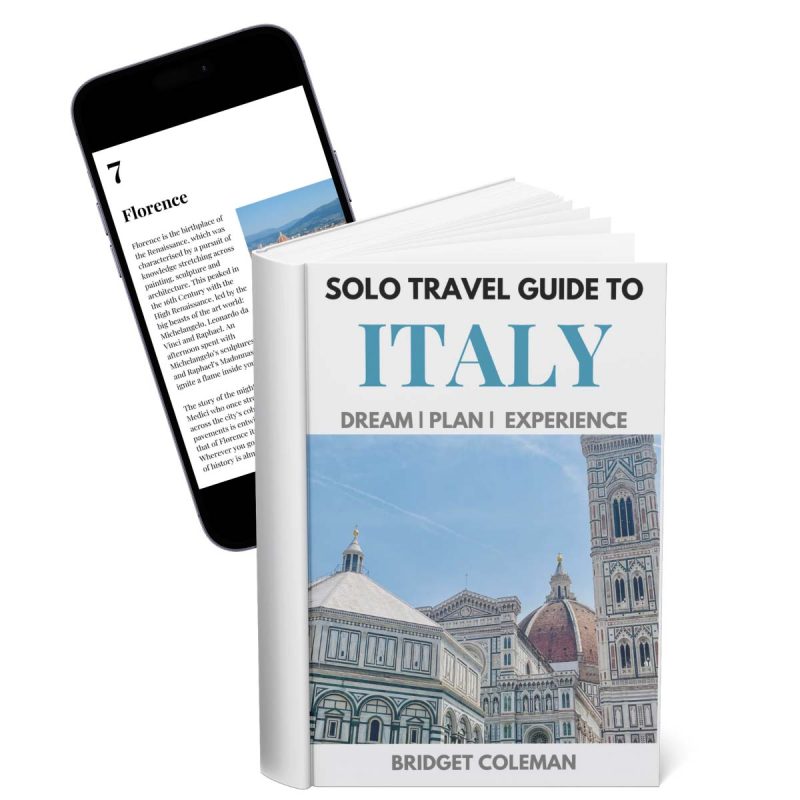It was no ordinary weekend in Perugia.
The Umbrian capital’s streets were teeming with locals in medieval dress, its five rioni (districts) competing in sporting contents that included javelin throwing and archery. There were jugglers, stilt walkers, fire-eaters, musicians and dancers, the festivities culminating in a spectacular historical parade.
Marking the victory of Braccio Fortebracci at the Battle of Sant’Egidio on the 12th of July 1416, the Perugia 1416 festival transforms the city into a living history exhibit. It is a living connection to Perugia’s storied past.

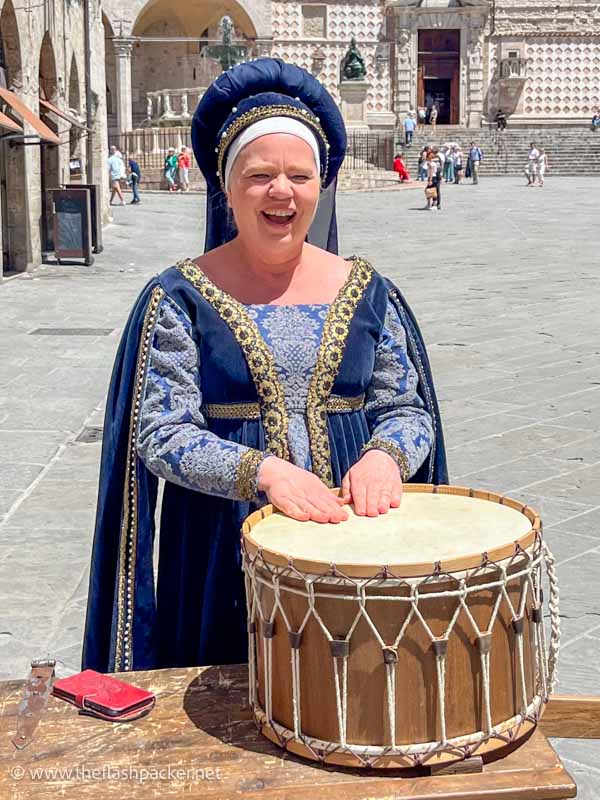
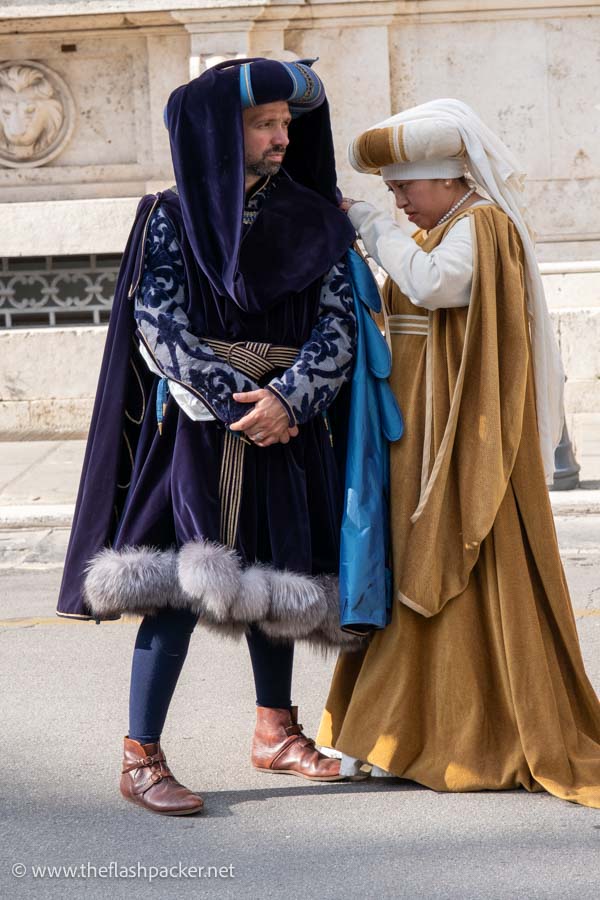
Perugia’s streets, monuments and buildings showcase centuries of architectural splendour and artistic achievements, from its ancient Etruscan roots to its glory days as a medieval stronghold. Exploring Perugia through the lens of its history reveals a city that has preserved its character, making it a fascinating, and often overlooked, destination for history enthusiasts and travellers alike.
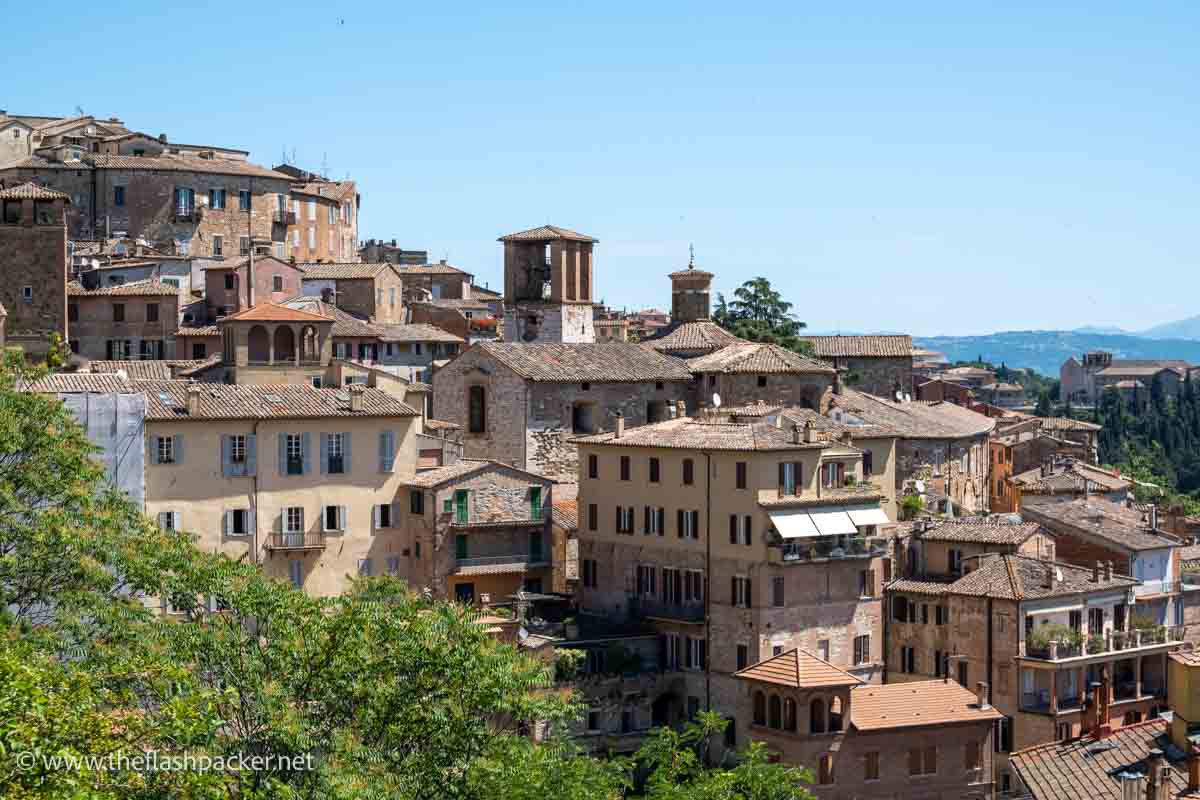
Some articles on this website contain affiliate links. This means that I may earn a small commission if you make a purchase through these links. As an Amazon Associate, I earn from qualifying purchases. Read the full disclosure here.
I’VE WRITTEN THIS ITALY SOLO TRAVEL GUIDE!
A 100+ page ebook to inspire and equip solo travellers with the confidence and knowledge to explore Italy independently
- Plan Your Trip – with curated itineraries, budgeting and how to get around
- Explore Awesome Destinations – guides to the must-see cities of Rome, Florence, Venice and Naples
- Stay Safe as a Solo Traveller – practical safety advice, empowering you to confidently navigate Italy and avoid common pitfalls
- Enjoy Eating Out in Italy – essential tried-and-tested solo dining tips
Perugia was assimilated by the Etruscans around 500 BC
Peiresa, as it was then called, became one of the twelve cities of the Etruscan Federation. Sections of the protective rampart built by the Etruscans in the 4th and 3rd centuries BC survive in Perugia’s city walls.
The Etruscan Well, also known as Pozzo Sorbello, is a remarkable feat of ancient engineering. Three underground springs still supply this well which was built in the 3rd Century BC and plunges to a depth of 37 meters.
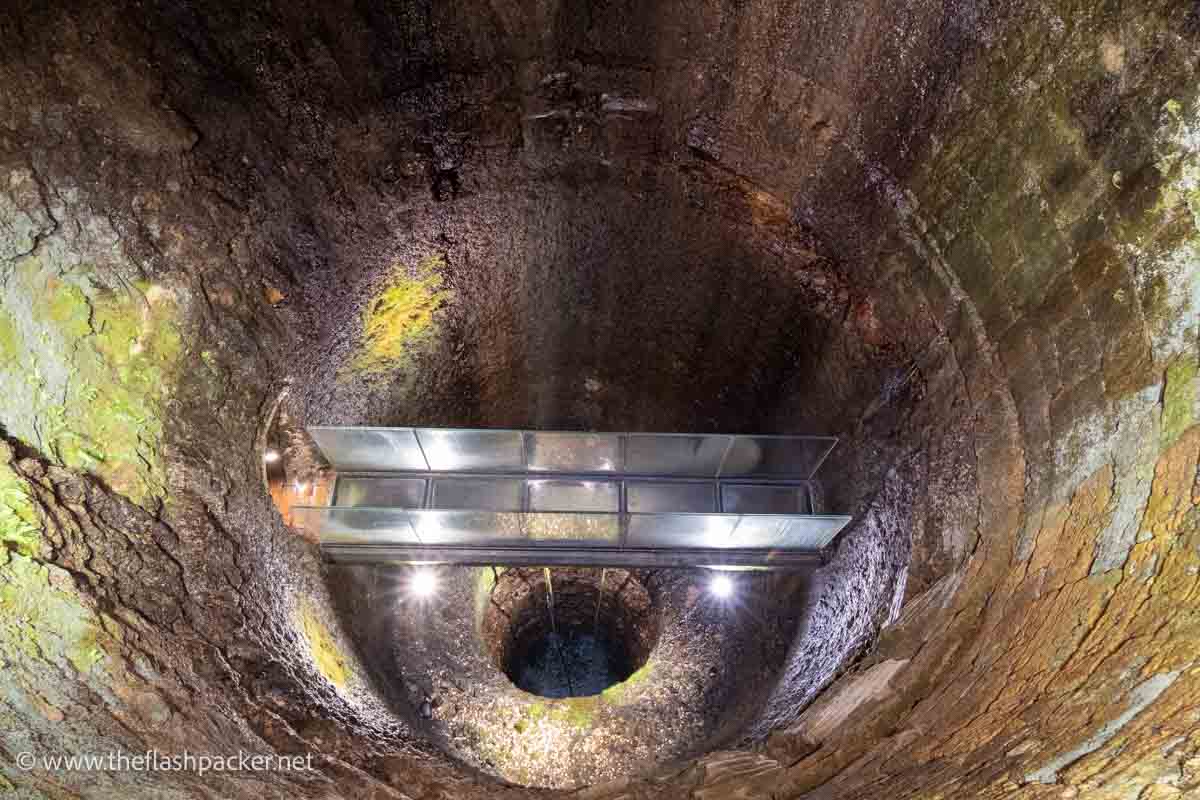
The National Archaeological Museum of Umbria (M.A.N.U.) has a superb collection of Etruscan artefacts, notably funerary urns, paint fragments still visible on some. Other highlights include the exquisite San Mariano Bronzes, Sarcophagus della Sperandio and stone carvings from the Cacni Tomb.
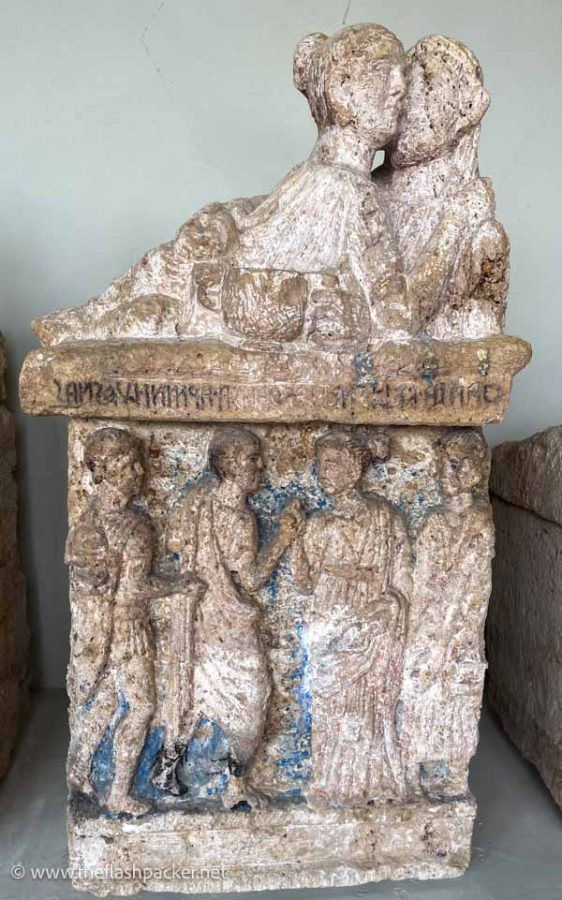
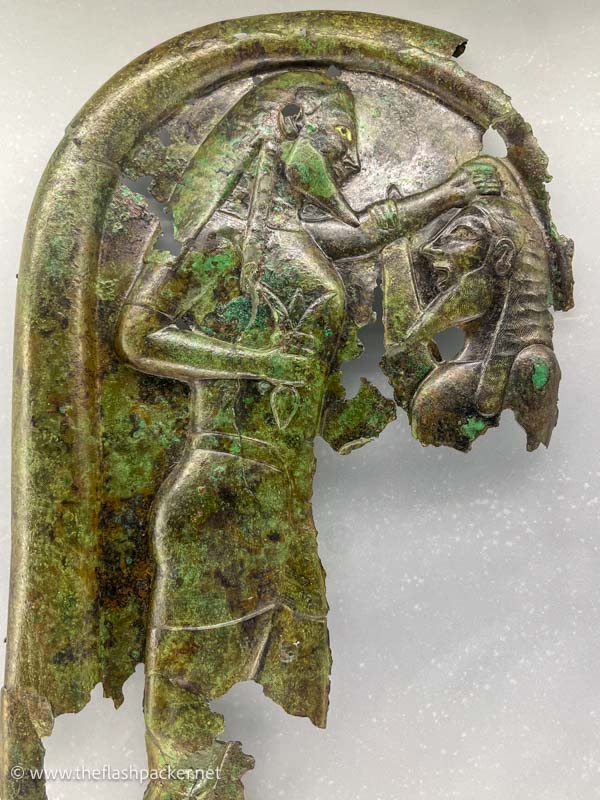
The Etruscan Arch, also known as Arco di Augusto, is a symbol of Perugia and was built over a 2,000 year period. The Etruscans were responsible for the lower section and the Romans built the upper section. It is crowned by a pretty 16th-century loggia.
It became a Roman colony in 310 BC
This was a peaceful integration but Perugia had the sheer bad luck to shelter Mark Anthony’s brother in one of the civil wars. Augustus’s forces lay siege to the city but it was one of Perugia’s residents that burnt the city to the ground.
The city surrendered to Augustus and he rebuilt the city, naming it Augusta Perusia (no modesty there). The city’s new name is still legible over the Etruscan Arch.
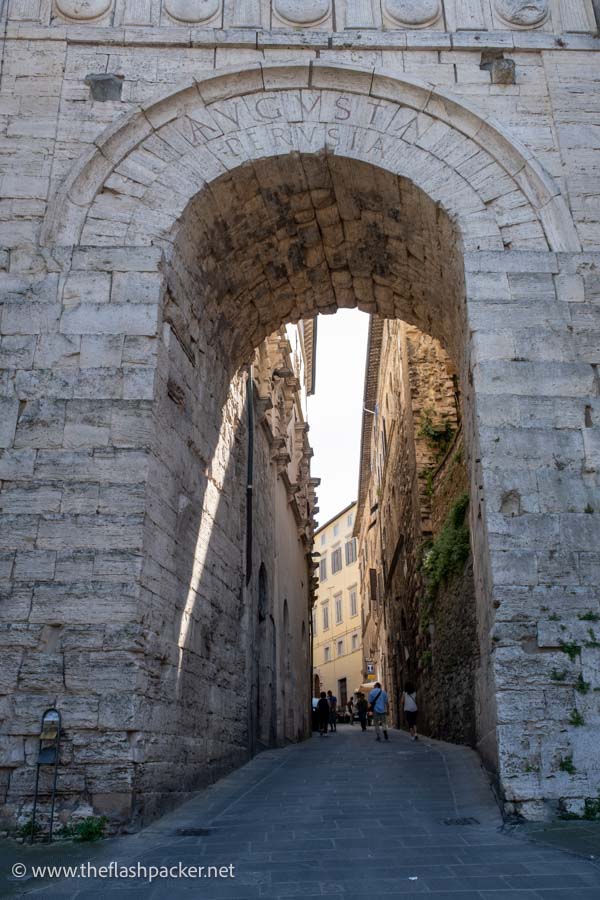
You have to search hard for remaining fragments of Roman Augusta Perusia.
Porta Marzia, at the entrance to Rocca Paolina, was the main gateway in the south of the city. It was incorporated into the city walls by the architect Antonio da Sangallo the Younger in the 16th Century.
Although you need a little imagination, you can just about make out the remains of a 1st-century Roman amphitheatre in the Borgo Bello district. The Archaeological Museum has a fine collection of Roman pieces.
The best place to see Roman Perugia is beneath the San Lorenzo Cathedral Complex on the Archaeological Tour of Underground Perugia, operated by the Museo del Capito. This immersive tour guides you through a maze of subterranean passages, where remnants of Etruscan, Roman and medieval architecture converge.
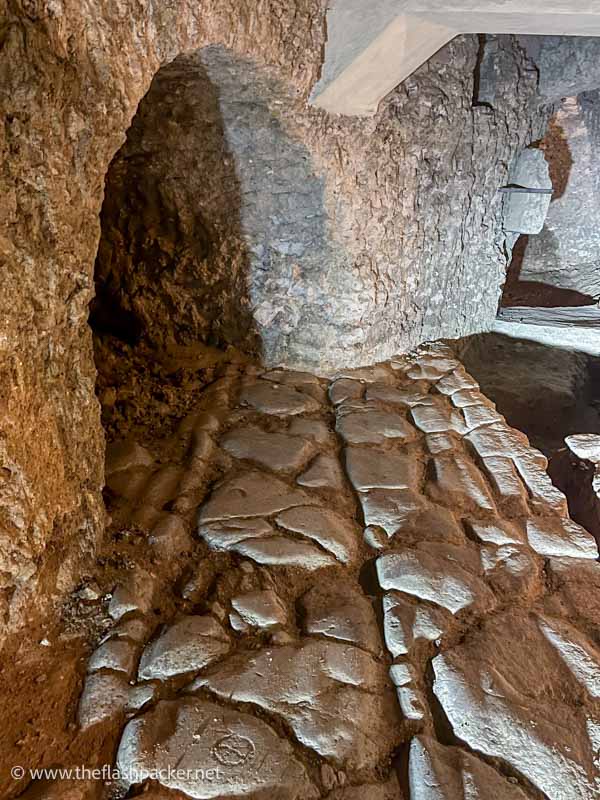
It’s a veritable Perugia time capsule. There’s part of the Roman Decumanus, scorch marks from the fire that devastated the city, and Etruscan remains, including carvings, a temple and a wonky column.
Perugia’s lovely Piazza IV Novembre was built over a Roman reservoir. This is the city’s beating heart and home to some of its most important buildings and monuments, including the Cathedral of San Lorenzo, Palazzo dei Priori and Fontana Maggiore.
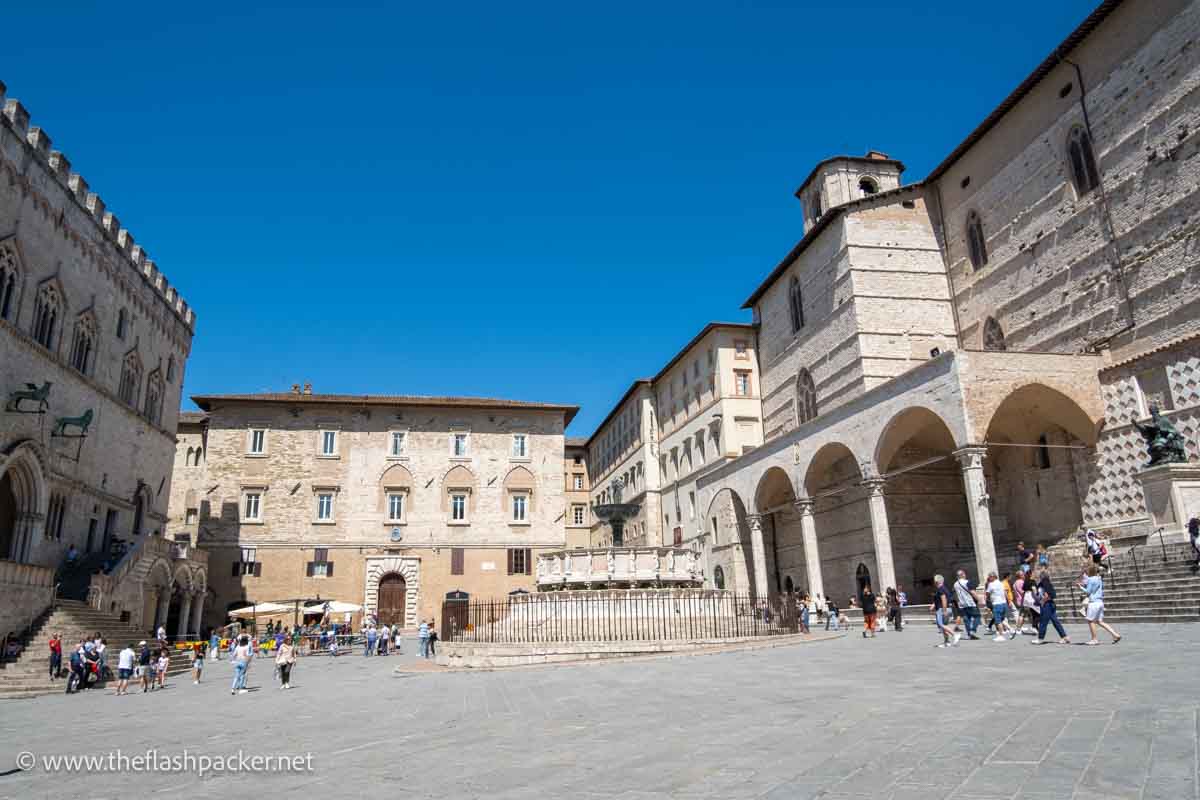
Tempio di San Michele Arcangelo reflects Byzantine influences
Perugia’s Byzantine heritage is less prominent than its Etruscan and medieval layers but offers one remarkable church.
Dating from the 5th or 6th century, the circular San Michele Arcangelo, also known as Sant’Angelo, is one of Italy’s oldest. It reused 24 Roman columns from the ancient temple which it replaced.
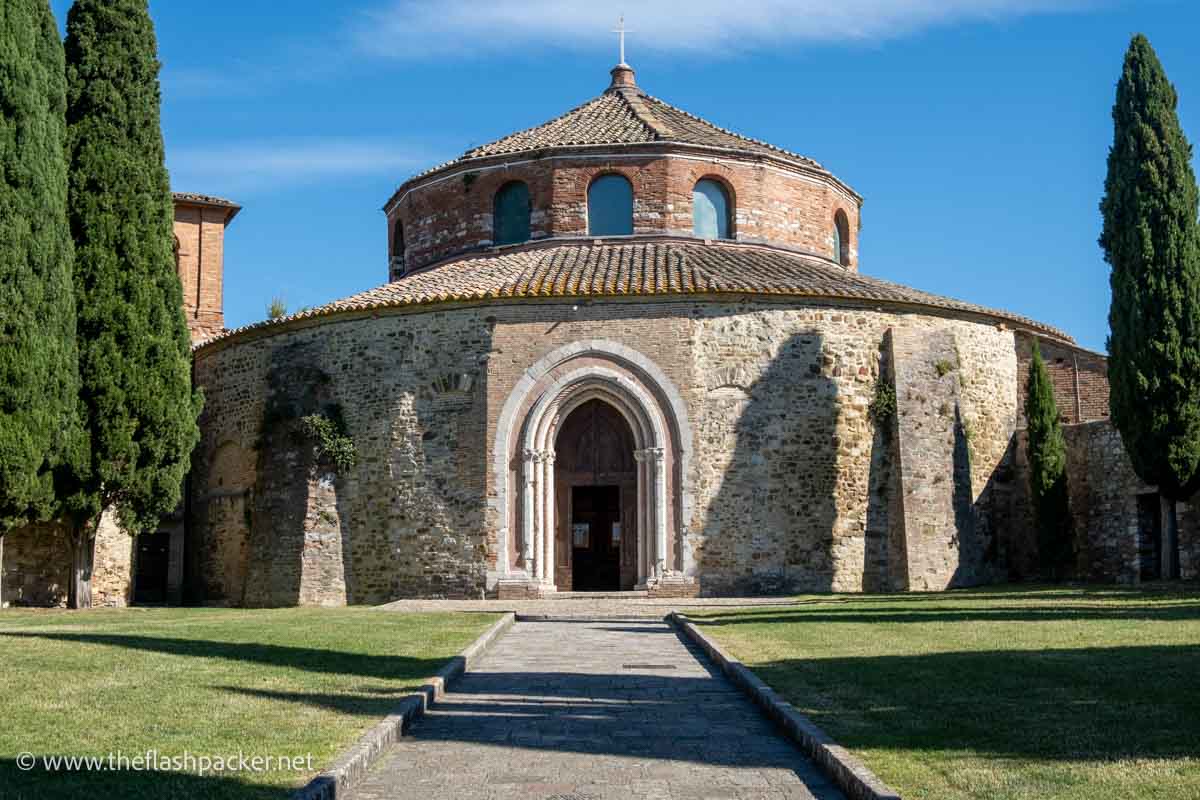
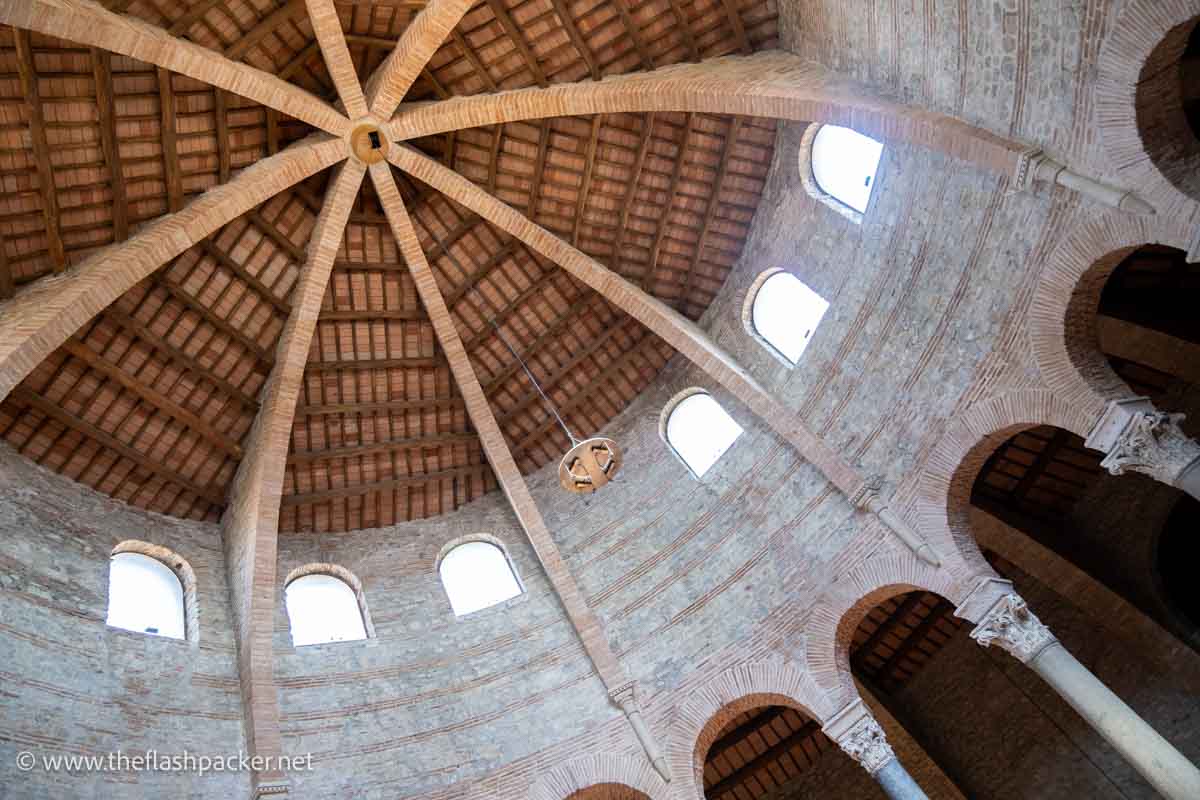
Perugia grew into a powerful city-state in the Middle Ages, renowned for its art and culture
The city’s medieval heritage is preserved in its art, architecture and urban layout. The most important buildings are around Piazza IV Novembre.
The Palazzo dei Priori has been the civic centre of Perugia since 1297. Its main façade overlooks Piazza IV Novembre and a flight of steps leads up to a Gothic portal and the Sala del Notari.
This remarkable room has an impressive vaulted ceiling and is wallpapered with frescoes by an anonymous painter. It was used for public assemblies and later by the city’s notaries.
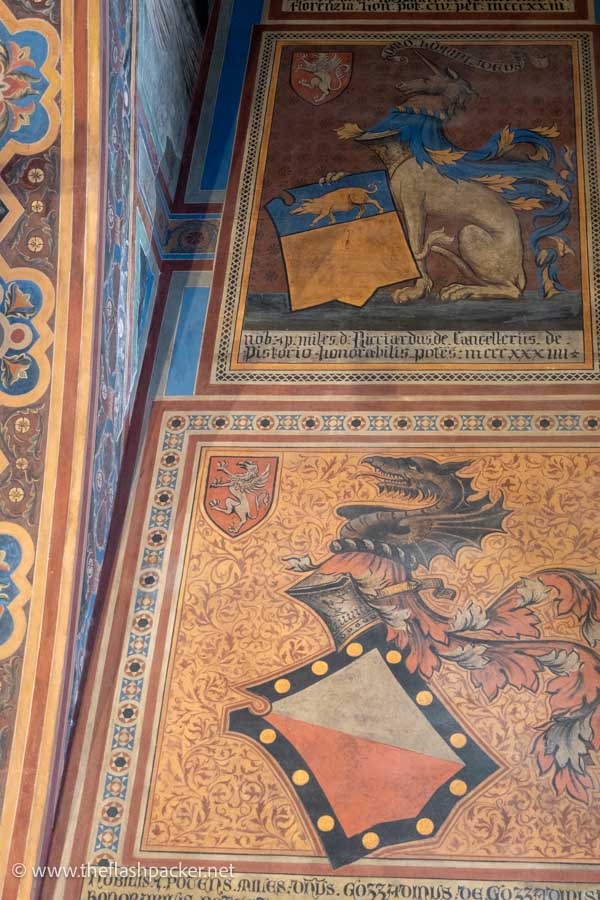
Fontana Maggiore is one of Italy’s most beautiful fountains. Designed by Fra Bevignate in 1280, its basins are adorned with bas reliefs depicting biblical scenes, allegories of the months, and symbols of the city’s virtues and history. They are the work of the famous sculptor Nicola Pisano and his son Giovanni.
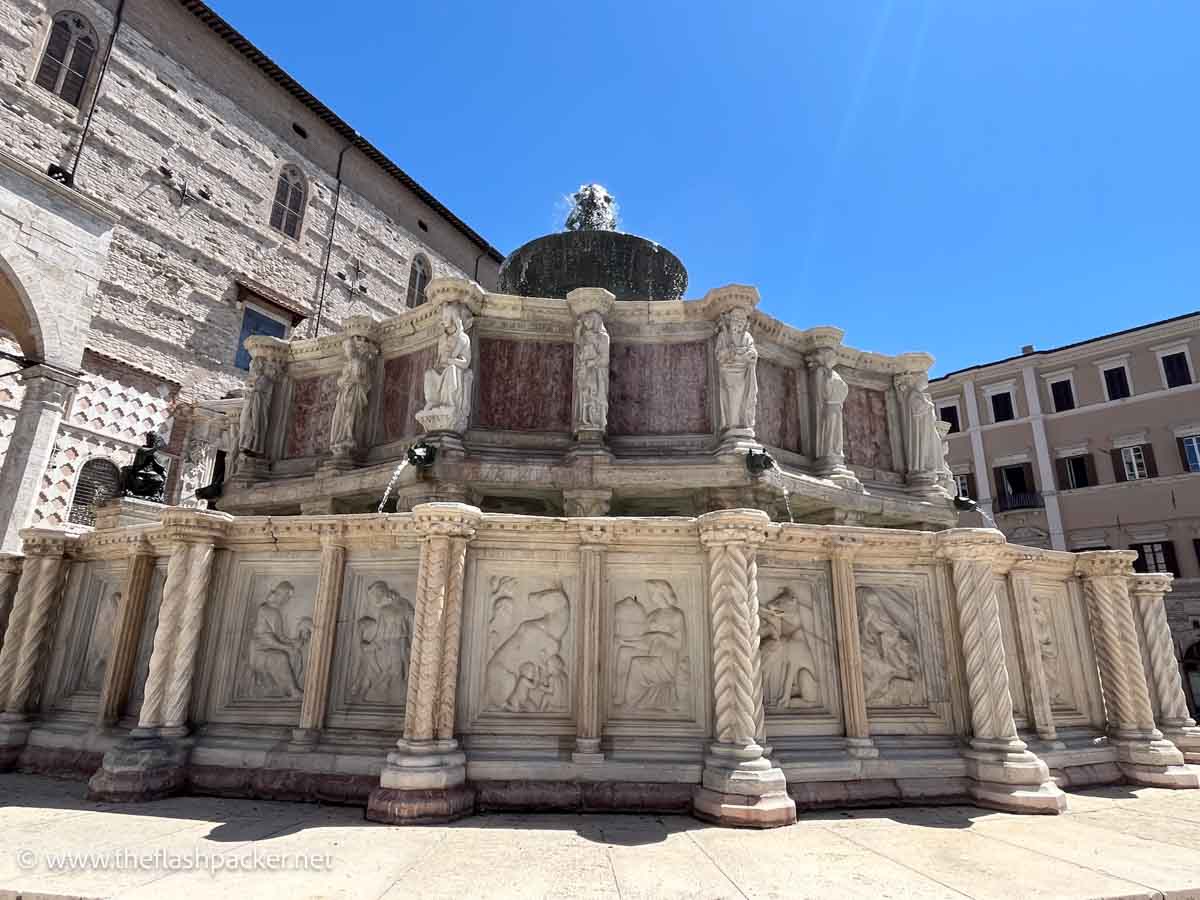
Inside the sombre interior of the Gothic San Lorenzo Cathedral (Cattedrale di San Lorenzo), a small chapel draws pilgrims from far and wide. The Chapel of the Holy Ring (Capella del Santo Anello) houses the “wedding ring” of the Virgin Mary, an onyx stone ring which the Perugini liberated from Chiusi.
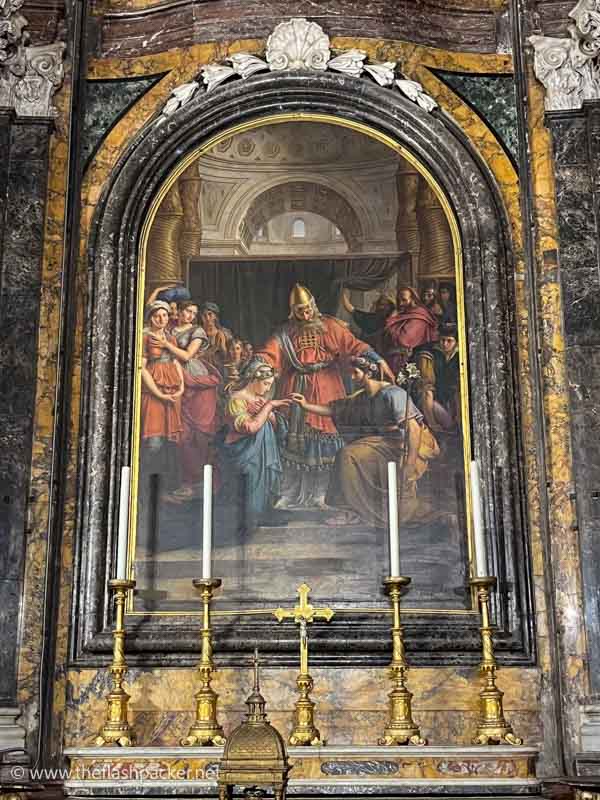
The cathedral is the first to admit that the story of the Holy Ring owes more to tradition than fact, and should be viewed as a symbol rather than a historical artefact. That said, the ring is displayed with great pomp and ceremony twice a year, on 29-30 July and 12 September.
Stretching from Piazza IV Novembre to Piazza Italia, Corso Vannucci is named after Perugia’s favourite son. Pietro Vannucci, better known as Perugino, was one of the most important painters of the Renaissance.
With the help of his pupils, including Raphael, he wallpapered the hall and chapel of the Collegio del Cambio (Bankers’ Guild) on Corso Vannucci with frescoes depicting Christian virtues and Classical culture. It is one of the most beautiful Renaissance rooms in Italy.
Don’t miss the adjacent Capella di San Giovanni Battista (included in your ticket). This small chapel is smothered in frescos depicting stories from the life of St. John the Baptist by Giannicola di Paolo who was a student of Perugino.
The Collegio della Mercanzia, a few doors along Corso Vannucci, oozes history. This is where the powerful Guild of Merchants conducted their business, imposing taxes, electing councillors and dishing out justice.
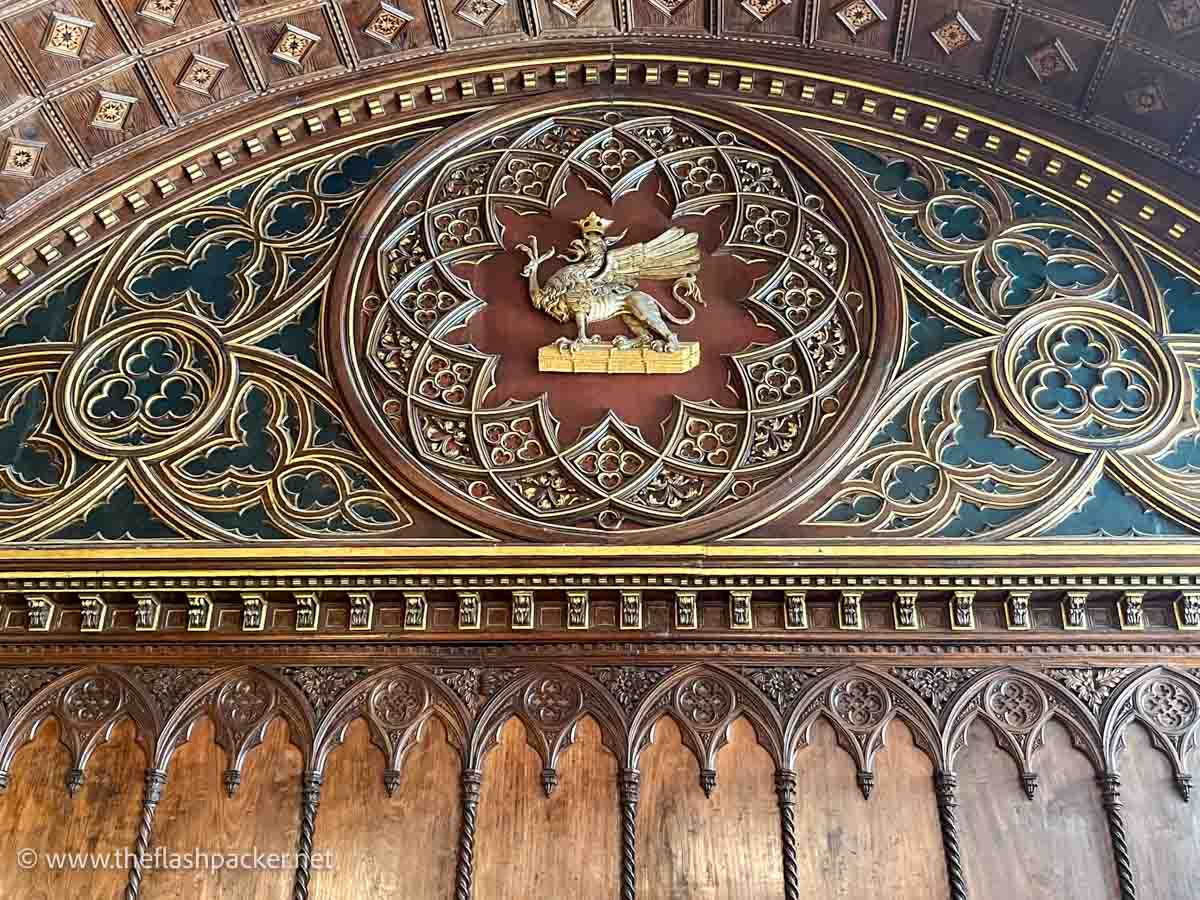
The massive San Domenico Basilica at the southern end of the city was founded in 1305 and rebuilt in 1632. It is home to Italy’s largest stained-glass window, which bears the signatures of Fra’Bartolomeo di Pietro da Perugia and Mariotto di Nardo.
San Domenico also has the beautiful tomb of Pope Benedict XI and terracotta by Agostino di Duccio.
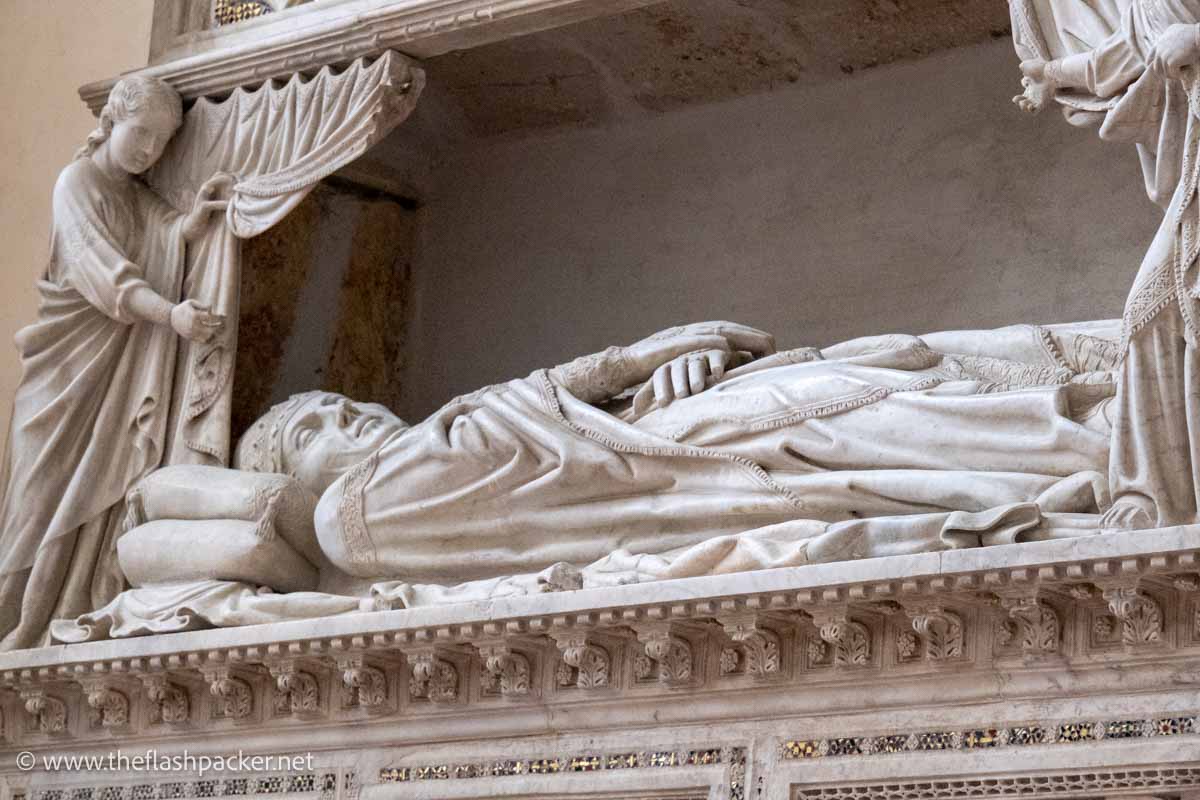
Delve deeper into Perugia’s art history
If you are an art lover, you won’t want to miss the National Gallery of Umbria (Galleria Nazionale dell’Umbria).
Its rooms take you on a chronological journey through Umbrian art from gilded medieval masterpieces to the Baroque and beyond. Paintings by Perugino and Pinturicchio, another Perugian native, are kept company by Florentine works.
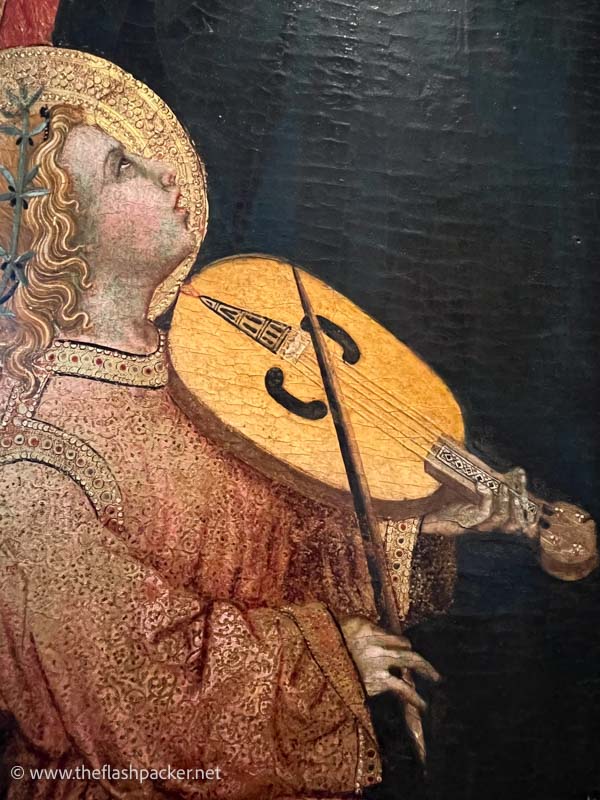
Although the Church of San Severo was given a Baroque makeover in the 1700s, a chapel decorated with Raphael’s first major commission was left unscathed.
He started work on Holy Trinity with Saints in 1505 but abandoned it when he was summoned to Rome to complete the work on the Vatican Stanze. His master, Perugino, completed the fresco, painting the figures of the six saints in the lower level
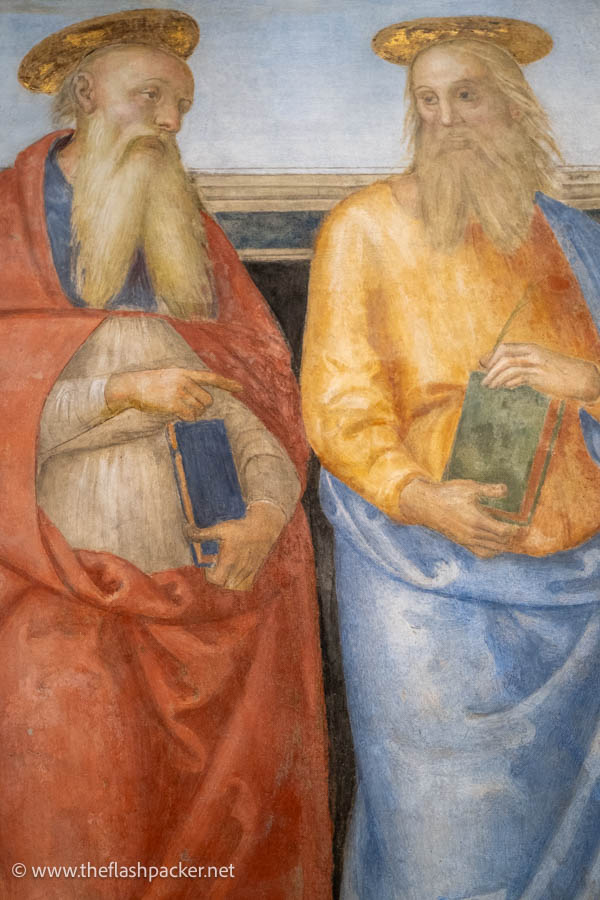
There are more paintings by Perugino in the Benedictine complex of San Pietro (they are in the sacristy and above its door). This beautiful basilica is smothered in vibrant frescoes and has wonderful carved wooden choir stalls.
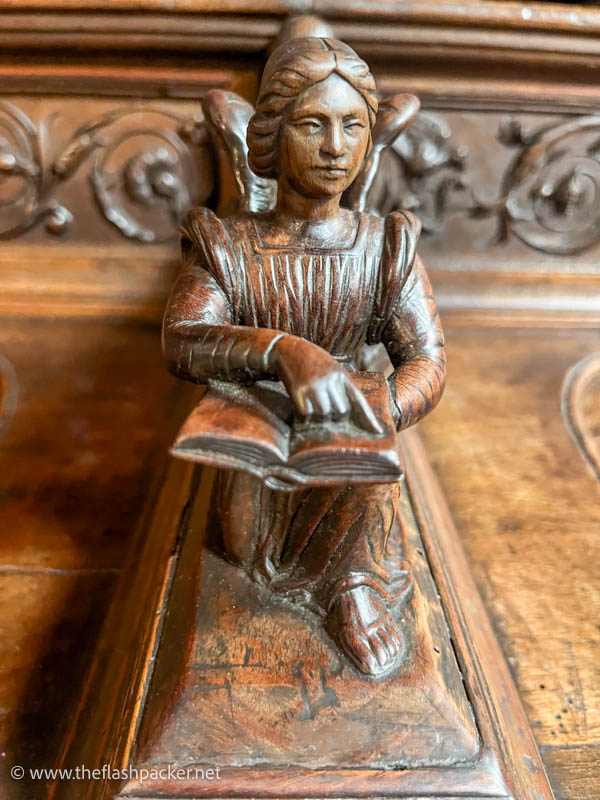
In 1540, Perugia was placed under the direct control of the Papal State
Pope Paul III ordered Antonio da Sangallo to construct the Rocca Paolina, a monumental papal fortress. It was built between 1540 and 1543 by incorporating an entire city district.
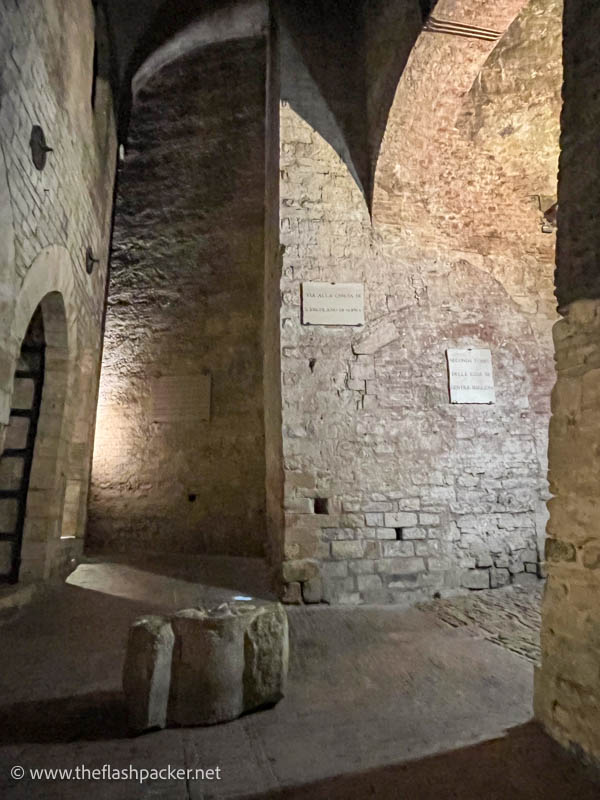
The ancient aqueduct (Antico acquedotto e via Appia) is one of the best things to see in Perugia
By the first half of the 19th Century, the 4-kilometre-long aqueduct carrying water from Monte Pacciano to Fontana Maggiore in the city centre was no longer needed. The final stretch leading into the city was transformed into a pedestrian pathway, Via dell’Acquedotto.
This unique street winds its way through candy-coloured houses from Porta San Angelo to the historic centre. It’s a must-do scenic walk.
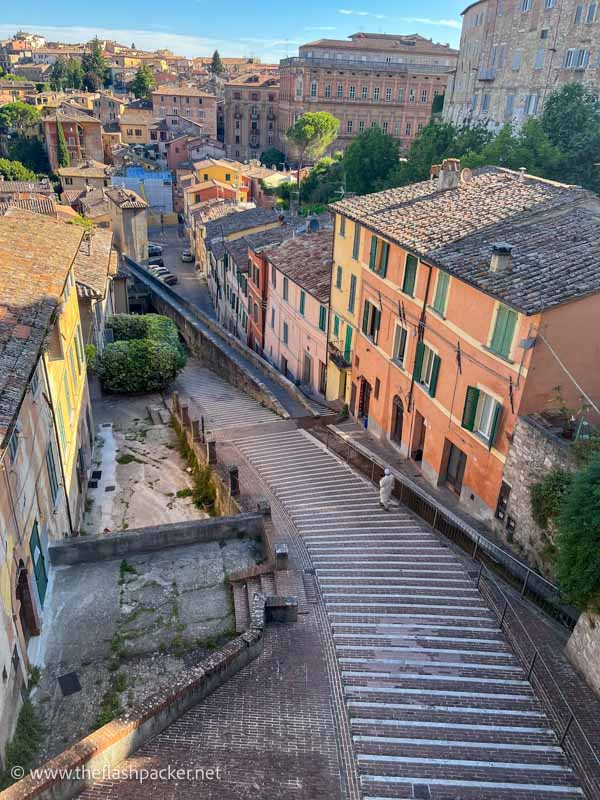
A Weekend in Perugia: Practical Information
Getting There & Getting Around
Perugia’s main train station (Perugia FS) is a few miles from the historic centre and serves regional trains to destinations including Assisi, Spoleto, Lake Trasimeno, Arezzo and Florence.
You can check train times and fares here. As fares for these services are fixed, there is no need to book your ticket in advance.
The innovative Minimetrò connects Perugia FS to the historic centre in ten minutes (alight at Pincetto station at the end of the line).
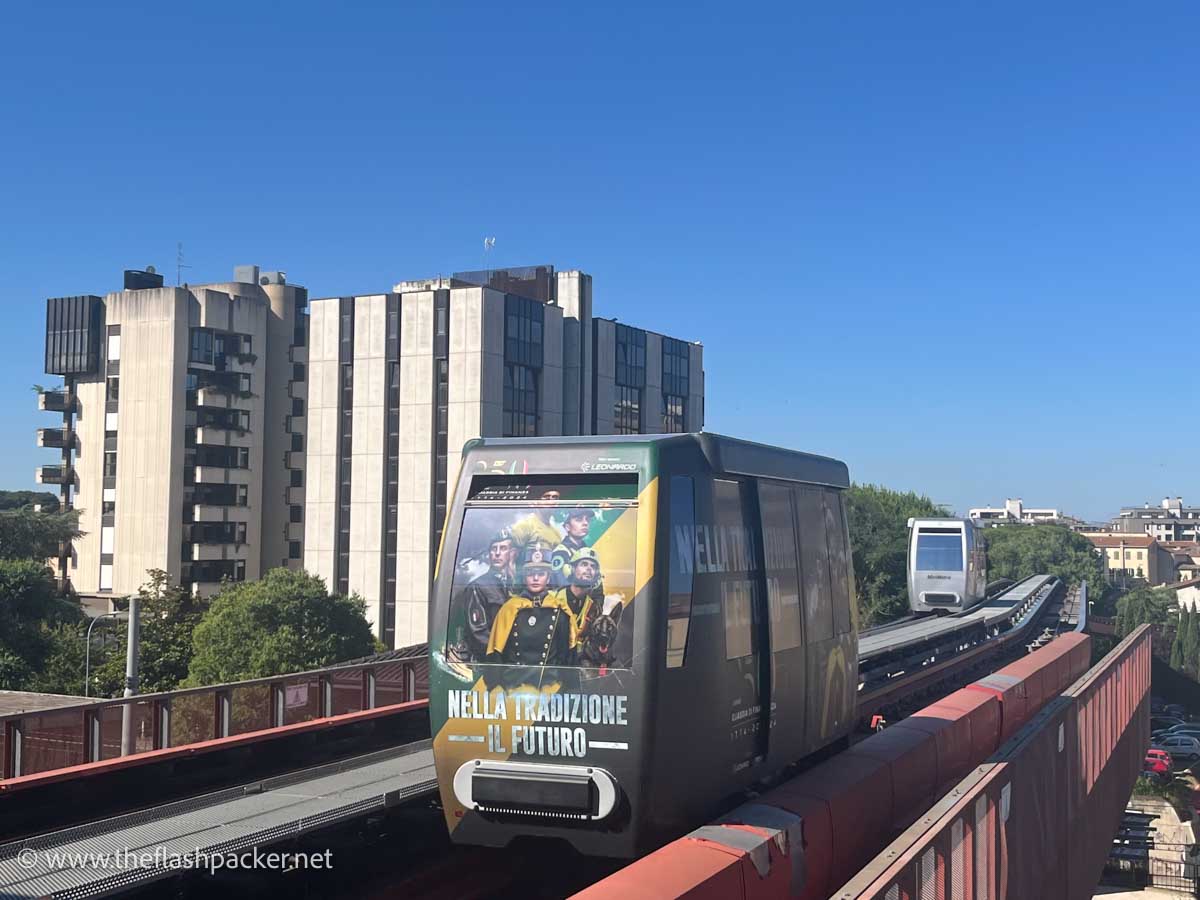
Perugia is also connected by bus. You’ll be dropped off at Piazzale Umbria Jazz, connected to the historic centre by the Minimetrò, or at the more centrally-located Piazza Partigiani.
Perugia has an airport (PEG) but flights are limited to a handful of destinations, most of which are in Italy.
The historic centre of Perugia is compact and walkable. Most sights are within a ten-minute walk of Piazza IV Novembre. San Pietro and Tempio de San Michele Arcangelo are 20 minutes on foot from the central square. Just steel yourself for a few steep uphill climbs.
Where to Stay
I loved my stay at Cozy Studio 308. It was stylish, clean and quiet, despite being a stone’s throw from Piazza IV Novembre. The hosts were friendly, helpful and responsive.
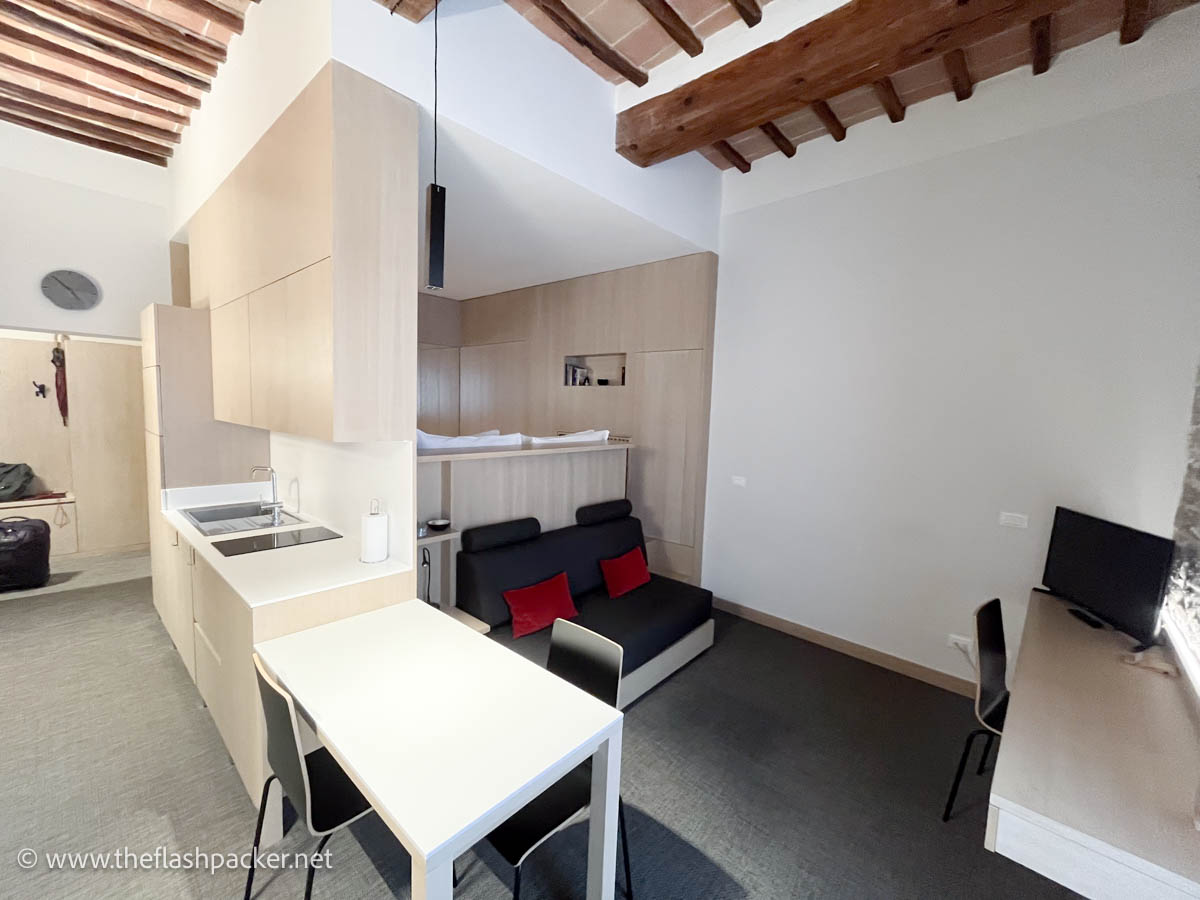
If this doesn’t meet your needs, take a look at these:
Fancy swimming over an Etruscan ruin? Then this is the hotel for you. This centrally-located 19th-century luxury hotel offers fabulous views over the Umbrian hills.
Some of this charming 3-star hotel dates back to the 1300s and it has a lovely rooftop terrace. Again, it’s in a terrific location.
And that’s a wrap!
I hope this article helps you identify what to do in Perugia and you have the best weekend there. You can find out more about the Perugia 1416 festival here.
It attracts a fraction of visitors descending on the tourist honeypots of Florence and Rome and is all the better for this. And it is the ideal base for day trips by train to places like Assisi, Spello and beautiful Lake Trasimeno.
Happy travels!

About Bridget
Bridget Coleman has been a passionate traveller for more than 30 years. She has visited 70+ countries, most as a solo traveller.
Articles on this site reflect her first-hand experiences.
To get in touch, email her at hello@theflashpacker.net or follow her on social media.

